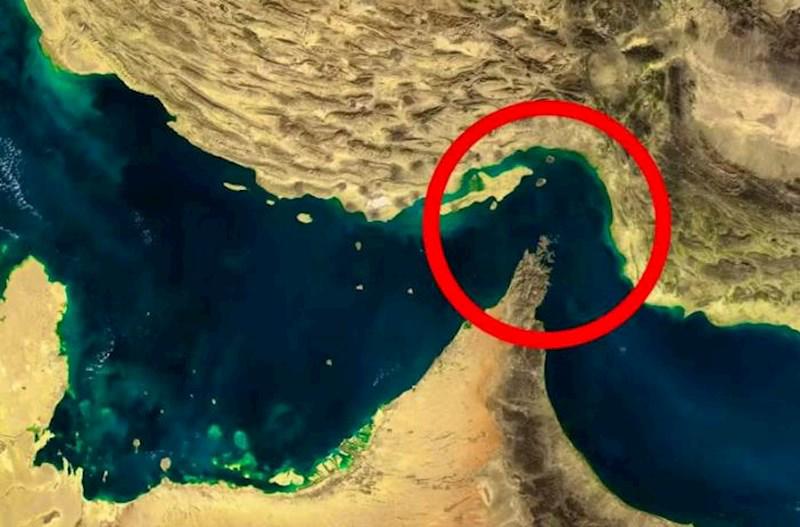BAKU, Azerbaijan, June 24. As tensions escalate in the Middle East, Iran’s threat to block the Strait of Hormuz is sending shockwaves through global energy markets, reviving fears of a sustained oil price shock that could ripple across the world economy.
The Strait of Hormuz - a narrow, strategic waterway between Oman and Iran - is once again at the center of geopolitical turmoil. Following a series of U.S. airstrikes on Iranian nuclear facilities and retaliatory missile attacks on Israel, Iran’s Parliament has voted to approve the potential closure of the strait, pending final approval from the Supreme National Security Council. If enacted, such a move could severely disrupt global oil and liquefied natural gas (LNG) flows and trigger widespread economic consequences.
Often described as the world’s most critical energy corridor, the Strait of Hormuz handles approximately 20 million barrels per day of oil - nearly 20% of global petroleum liquids consumption. According to the U.S. Energy Information Administration (EIA), in both 2024 and the first quarter of 2025, oil flows through the strait remained steady, accounting for over one-quarter of global seaborne oil trade and a fifth of worldwide LNG shipments.
The EIA emphasizes that Asian economies are particularly vulnerable: in 2024, about 84% of crude oil and condensate through Hormuz went to Asia, with China, India, Japan, and South Korea receiving nearly 70% of these flows. “Any disruption could trigger a significant and sustained oil price shock,” JP Morgan analysts warned in a recent report, estimating a worst-case scenario where oil prices could surge to $130 per barrel.
Iranian officials weigh the costs
While Tehran has not confirmed any decision, Chargé d'Affaires of the Iranian Embassy in Baku, Jafar Aghaei Maryan, told Trend that the issue remains under serious discussion. “The Supreme National Security Council of Iran can decide whether to close the Strait of Hormuz,” he said, indicating that the country’s leadership views it as a strategic tool in response to Western military pressure.
However, experts note the paradox: blocking the strait would hurt Iran’s own interests. Iran has been steadily increasing crude oil exports, now reportedly producing around 2.3 million barrels per day despite U.S. sanctions. Its oil sector is vast, with 74 active oil fields and an estimated 1.2 trillion barrels in total hydrocarbon reserves. A self-imposed export blockade would cut off a crucial source of revenue.
“Iran relies heavily on oil revenues,” the Oxford Institute for Energy Studies (OIES) noted. “A closure would severely damage its economy, making a long-term blockade unlikely.”
Markets react amid escalation
The threat alone has already rattled markets. Following Israel’s operation, Brent crude prices spiked to nearly $78 before stabilizing at around $70. The reaction reflects the oil market’s sensitivity to geopolitical developments in the Gulf.
“High volatility is expected in the near term,” said Janiv Shah, Vice President of Oil Markets Analysis at Rystad Energy. “If tensions persist and the Strait of Hormuz is impacted, even briefly, the ripple effects on global supply chains will be significant.”
According to the Joint Maritime Information Center (JMIC), the threat level in the region is now “significant.” While maritime traffic through the Strait continues, many vessels are opting to sail during daylight hours or are waiting in the southern Gulf of Oman. “We have seen congestion near Dubai and increased electronic interference,” JMIC reported, highlighting concerns over GPS jamming near the Port of Bandar Abbas.
Shipping giant Maersk has confirmed it continues to operate through the strait but is closely monitoring the evolving security situation. Contingency plans are in place.
Despite its strategic leverage, Iran faces a narrow calculus. On one hand, the closure could serve as a potent form of retaliation amid U.S.-Israeli pressure. On the other, it risks triggering international military responses and potentially alienating energy-hungry allies like China.
The International Energy Agency (IEA) is preparing for all scenarios. “The IEA is actively monitoring the situation,” the agency told Trend, noting it has over 1.2 billion barrels in emergency stocks. Executive Director Fatih Birol reiterated that the agency’s oil security system has been vital to safeguarding the global economy in past crises.
U.S. President Donald Trump also weighed in via social media, warning oil producers against escalating the crisis. “EVERYONE, KEEP OIL PRICES DOWN. I’M WATCHING!” he wrote.
Limited alternatives, global impact
While alternative export routes through Saudi Arabia, the UAE, and Iraq exist, they offer only partial relief. Most Gulf countries still rely on the Strait of Hormuz for a significant portion of their exports. As such, even a temporary closure could cause a 30-35% spike in oil prices, Iranian experts estimate, shaking financial markets and straining global supply chains.
In the LNG sector, Qatar - one of the world’s top exporters - would also face serious constraints. Disruptions could reduce Europe’s access to Qatari LNG, forcing greater reliance on oil-based alternatives and pushing up prices for diesel and electricity.
The potential closure of the Strait of Hormuz illustrates the fragile interdependence of global energy markets and geopolitics. While Iran’s rhetoric and recent events underscore a willingness to escalate, the broader consequences - for itself and for the world - may prove too costly for such a step to be sustained.
Nonetheless, as military operations continue and diplomatic efforts remain uncertain, the global energy sector is bracing for what could be the most serious disruption since the early days of the Russia-Ukraine conflict. Whether the Strait remains open or is closed, even briefly, the message is clear: the world's economic stability is still heavily tethered to this narrow strip of water in the Persian Gulf.







